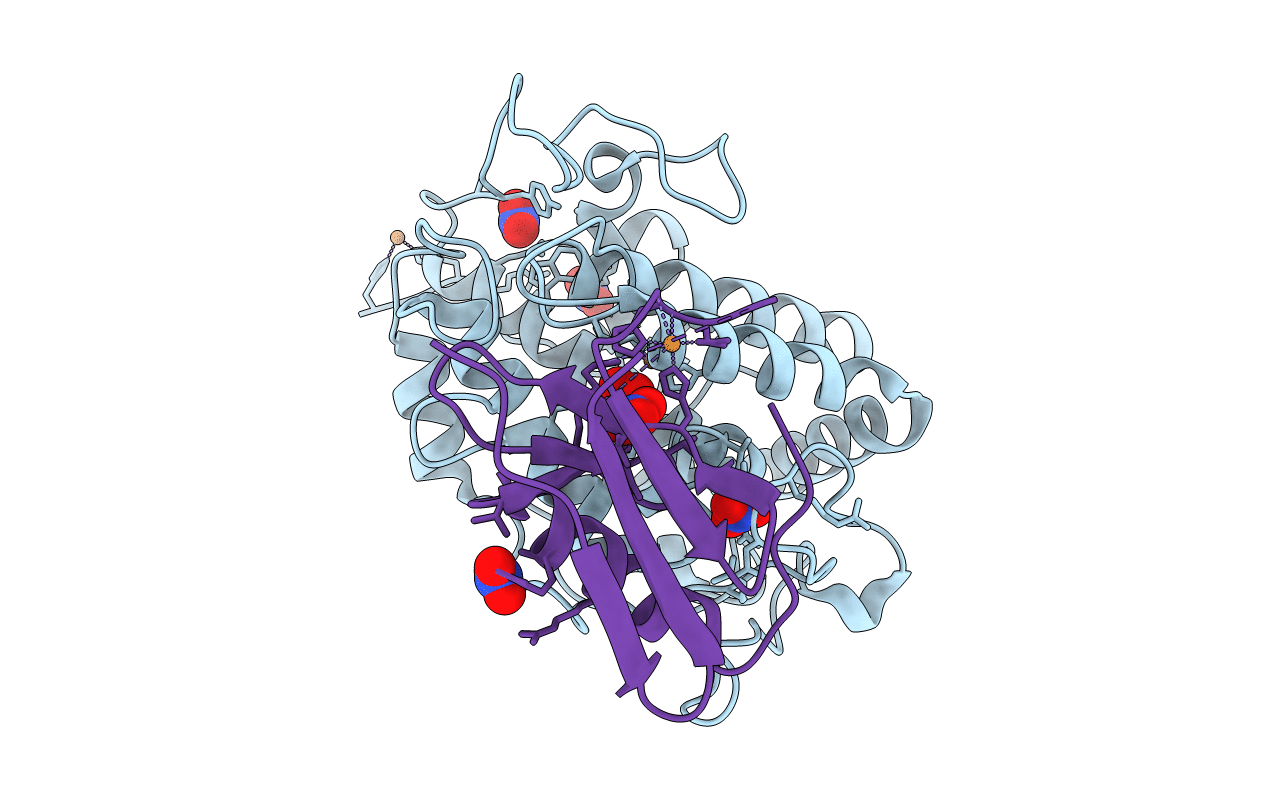
Deposition Date
2020-07-08
Release Date
2021-06-16
Last Version Date
2023-11-29
Entry Detail
PDB ID:
7CIY
Keywords:
Title:
Crystal structure of N191G-mutated tyrosinase from Streptomyces castaneoglobisporus in complex with the caddie protein obtained by soaking in the solution containing Cu(II) and hydroxylamine for 24 h
Biological Source:
Source Organism:
Streptomyces castaneoglobisporus (Taxon ID: 79261)
Host Organism:
Method Details:
Experimental Method:
Resolution:
1.47 Å
R-Value Free:
0.19
R-Value Work:
0.13
R-Value Observed:
0.13
Space Group:
P 21 21 2


